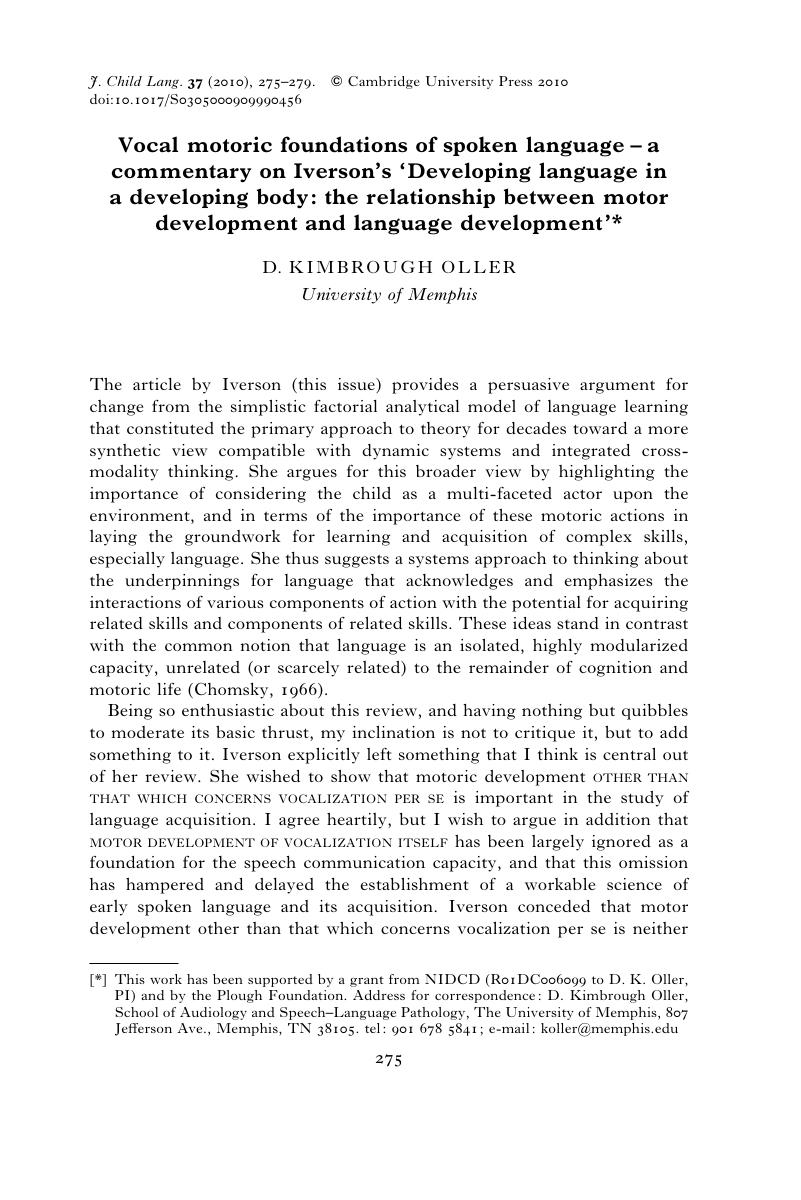No CrossRef data available.
Article contents
Vocal motoric foundations of spoken language – a commentary on Iverson's ‘Developing language in a developing body: the relationship between motor development and language development’*
Published online by Cambridge University Press: 21 January 2010
Abstract

- Type
- Review Article and Commentaries
- Information
- Copyright
- Copyright © Cambridge University Press 2010
Footnotes
This work has been supported by a grant from NIDCD (R01DC006099 to D. K. Oller, PI) and by the Plough Foundation.


